Nokia: The Story of the Legendary Phone Manufacturer – Part 2
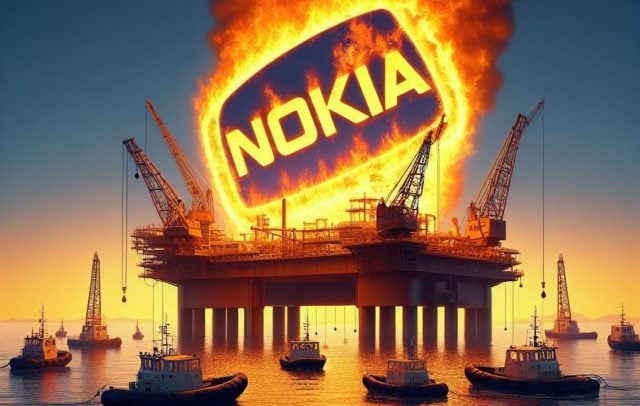
Nokia, which left its mark on the mobile device industry at the beginning of 2007, was breaking record after record in sales, but two new players that would shake its throne were starting to show themselves in the distance: Apple and Google. We also talked about the impact of Apple’s launch of the iPhone in our other articles covering the history of technology. From Flickr to BlackBerry; Of course, we cannot imagine that the iPhone, which has changed and transformed the products and services used by every user, from the iPod to Adobe Flash Player, would not have an impact on Nokia. Likewise, Google’s Android was also a big factor that influenced Nokia.
In this last part of the article series Nokia: The Story of the Legendary Phone Manufacturer, the first part of which we published last September, we will discuss with you, our readers, the turbulent process in which the company re-entered.
Series of Disasters
2007 was a remarkable year for Nokia. Because the company managed to retain almost half of all phone sales worldwide in 2007; However, despite this positive development, things started to go wrong again in Nokia’s management level. The harmony and efficiency process initiated by CEO Jorma Ollila, whose name we mentioned with his achievements in the first article, to revitalize the entrepreneurial drive of all teams under Nokia’s roof, was now starting to lose its effect…
This organizational form, called “matrix structure”, with the areas of Mobile Phones, Networks, Multimedia and Corporate Solutions, which we know as the four different business lines that make up the Finnish giant, was supposed to make Nokia more agile. However, this goal was replaced by fierce competition between the business areas in question, and chaos began to occur again. Because all of Nokia’s financial and moral resources were allocated to the business lines we mentioned in different proportions, and every manager was working hard to get a bigger share of the cake. This point, where the harmony within the company evolved into internal disintegration, brought about the resignation of managers and many complications.

Nokia, which holds half of the market share in its sector, gradually lost coordination between business units and a number of new products had to be developed in this chaotic environment. Additionally, after research and development costs increased at an incredible rate, CEO Ollila limited the portion of the company’s annual income allocated to R&D. This important decision forced Nokia to choose between hardware or software, and the current management made its choice in favor of hardware. As you can imagine, this decision would cause Nokia to fall behind on the operating system front, and in another sense, to produce products with missing features.
In the following period, many senior executives whose names we mentioned in the first section, especially CEO Jorma Ollila, began to leave Nokia one by one. The new name, Olli-Pekka Kallasvuo, who assumed the role of CEO, announced that as soon as he took office, he would begin a restructuring process in order to gather the business units that were about to be dissolved. Nokia, which is divided into two main groups as Devices – Services and Networks, started to stand on solid ground for a while with the support of the users it appealed to. But the mobile phone industry was on the verge of a major change, and it was obvious that Nokia would fall behind this change.
iPhone on Stage
The first iPhone was introduced at Macworld in 2007; Despite obvious shortcomings such as GPS, 3G connection and video recording, it gave rise to a new trend. The multi-touch screen and clear design made Nokia phones seem outdated. However, many companies, including Nokia management, saw Apple’s iPhone move as a short-term excitement and a simple initiative. Steve Ballmer, who was Microsoft’s CEO at the time, also commented that the price of the iPhone was excessive and that it did not appeal to the general user base. Unlike Nokia and Microsoft, Google realized the potential of the iPhone while developing Android and turned its entire goal to compete with this device.
Nokia CEO Olli-Pekka Kallasvuo still did not realize the danger until he met with Apple’s number one name, Steve Jobs, in 2008. During this meeting, Steve Jobs said, “You are not my rival. Apple is a platform company, and there is only one other platform company in the industry – Microsoft. I’ve been building my platform for decades. “You are just getting started.” when you include your words Kallasvuo realized that Nokia was wrong in focusing on hardware rather than software. With Google Android; While Microsoft would shape the competition in the industry with Windows Phone and Apple with iOS, it was only a matter of time before Nokia would be out of the game.
In May 2008, Nokia; introduced the E71 model, which became popular thanks to its features such as e-mail, calendar and messaging features, slim design and relatively long battery life. Although the device was widely criticized for its BlackBerry-like structure, we remember that it was considered one of the best phones released this year.

First Response to Touch
In December 2008, Nokia N97, a touch-screen phone using the Symbian operating system, was announced. Its design referred to the Communicator series of the past, and thanks to this style, a certain segment of users adopted the product; However, N97 was still not a very popular device. This is because, just like BlackBerry, Nokia insisted on using a resistive touch screen that requires you to apply pressure with a finger or stylus. The fact that these screens operate with a pressure sensor located at certain points reduces responsiveness and provides an experience that tires the user. Apple was also attacking its competitors from this point in its marketing activities, talking about the fact that resistive screens were contrary to the spirit of touchscreen.
If you slide the screen up while holding the N97 horizontally, the QWERTY keyboard appears, but it was difficult to use because the mechanism required some force to use it. On the other hand, the operating system was not suitable for QWERTY keyboard use.
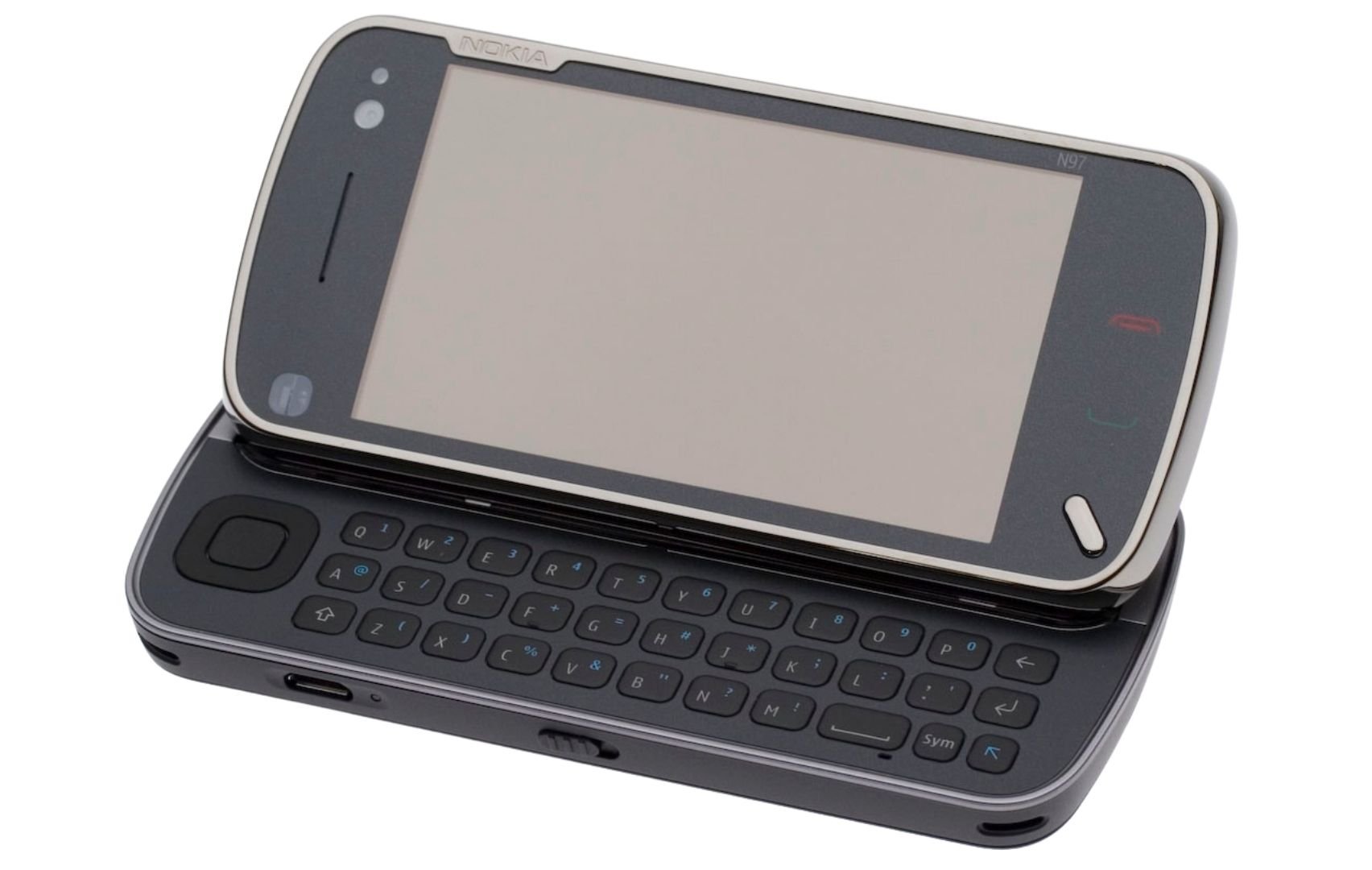
The shortcomings were not limited to this. The Symbian-based S60 operating system had an inconsistent interface and consumed a lot of RAM. Despite this, since Nokia equipped the N97 with only 128 MB of RAM, there were many problems that affected the user experience. In addition, although the N97 had 32 GB of internal memory, everyone reacted to the fact that this space was reserved for media files. Because the device only had 50 MB capacity to install 3rd party applications. The rear and front cameras have remained almost unchanged compared to the N95 model, which we explained in detail in the first section. The fact that the 1500 mAh replaceable battery offered a good usage time actually overshadowed these bad aspects.
Regardless, as tech editors at the time noted, there was a lot to like about this device. It was bright enough to use even with direct light hitting the screen, the hinge was very sturdy even though it required strength to use, and the 32 GB internal memory was more than enough for media files. The home screen supported live widgets and you could customize this layout as you wish. The map experience was great and the device had all the apps you might need by default. If not, it was possible to install the application you want from the Ovi Store in the limited space of 50 MB.
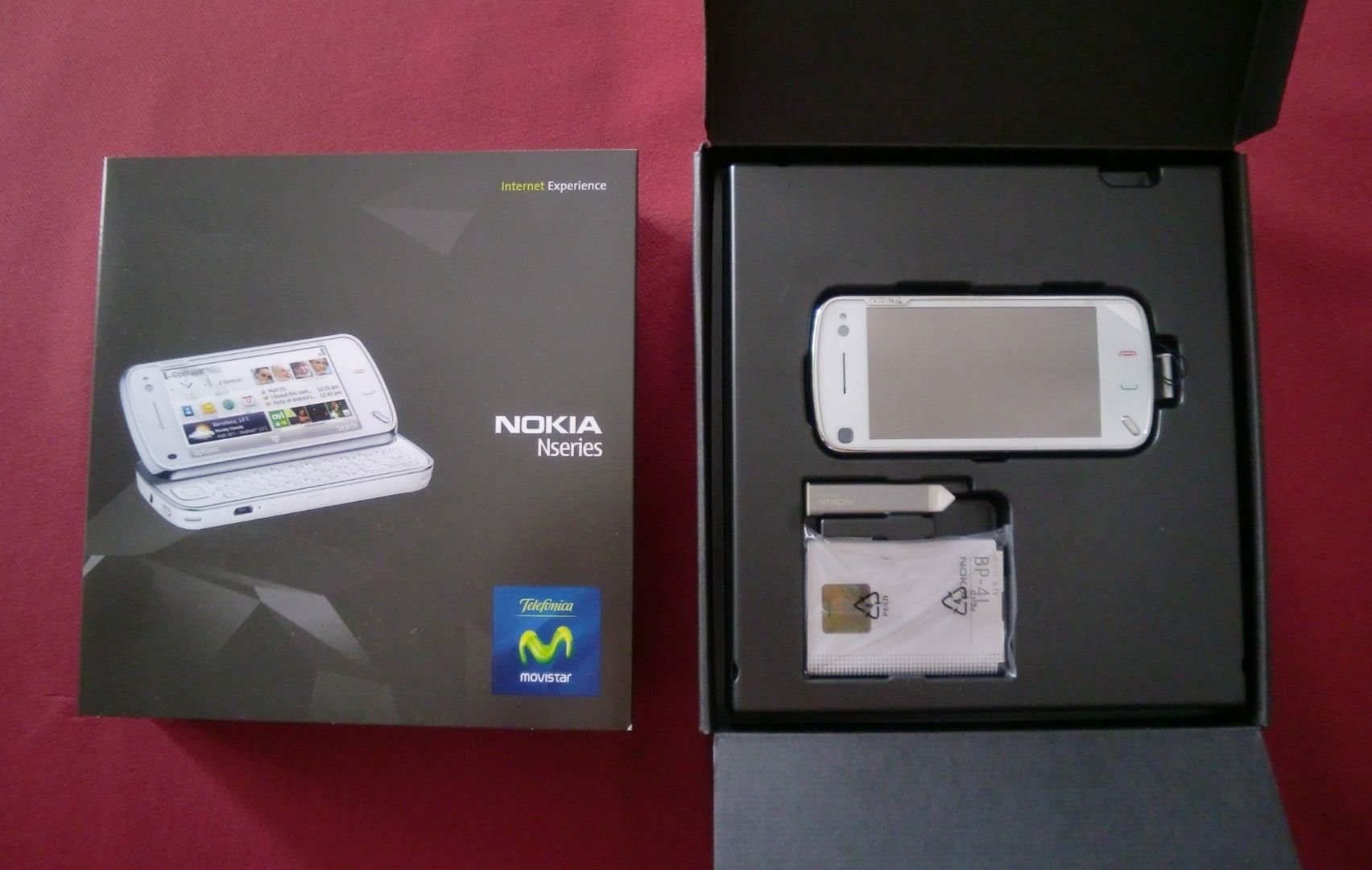
Priced at $700 (over $900 today), the N97 sold more than two million units by the end of 2009, when its successor, the N97 Mini, was released, a smaller and higher-quality device. However, during this period, the first Android phones, Blackberry devices and the iPhone were extremely popular and shook Nokia’s throne.
Software Crack
By 2009, Nokia realized that it had to completely scrap Symbian because it was lagging behind in the smartphone market in the triangle of Android, iOS and Windows Phone. In fact, Nokia senior executive Anssi Vanjoki sought funding in the past years to create a Linux-based Symbian alternative operating system codenamed OSSO, but the effort was never welcomed within the company. Even though OSSO, whose limited development was eventually completed, was later understood to be better than Symbian, there were still people who did not accept the existence of this project. OSSO found its way into the first Nokia 770 Internet Tablet, but as the product was largely a commercial failure, its operating system did not receive much attention.
Subsequently, OSSO’s name was changed to Maemo, and internal objections to this became even stronger. One of the two main reasons for this is that some managers are reluctant to support projects headed by Anssi Vanjoki; The other was that many users and developers were suddenly ignored during the transition from Symbian to Maemo.

After the official launch of Maemo, Nokia launched the N800 Internet Tablet, which has very similar hardware to the N series. N800, which appears as a large-sized Nokia phone in the eyes of editors and users; With its relatively high-resolution screen, retractable webcam built into the case, and two SD card slots, it was a product that everyone approached moderately.
While Nokia’s top management insisted on continuing development of Symbian, they also tried to find a middle ground that would allow Maemo to exist. For this reason, the company became the developer of the cross-platform application framework Qt in 2008 to enable applications to run jointly on two operating systems. Acquired Trolltech company for 153 million dollars. The idea was to encourage collaboration between the Symbian and Maemo teams by leveraging the Qt system. However, this project could not be put into practice due to various technical problems.
The restructuring process initiated in January 2008 under the leadership of CEO Olli-Pekka Kallasvuo also worsened Nokia’s software difficulties. Development of Maemo virtually came to a halt when the team that developed the Maemo operating system was integrated into the Symbian team as part of the Devices and Services group.
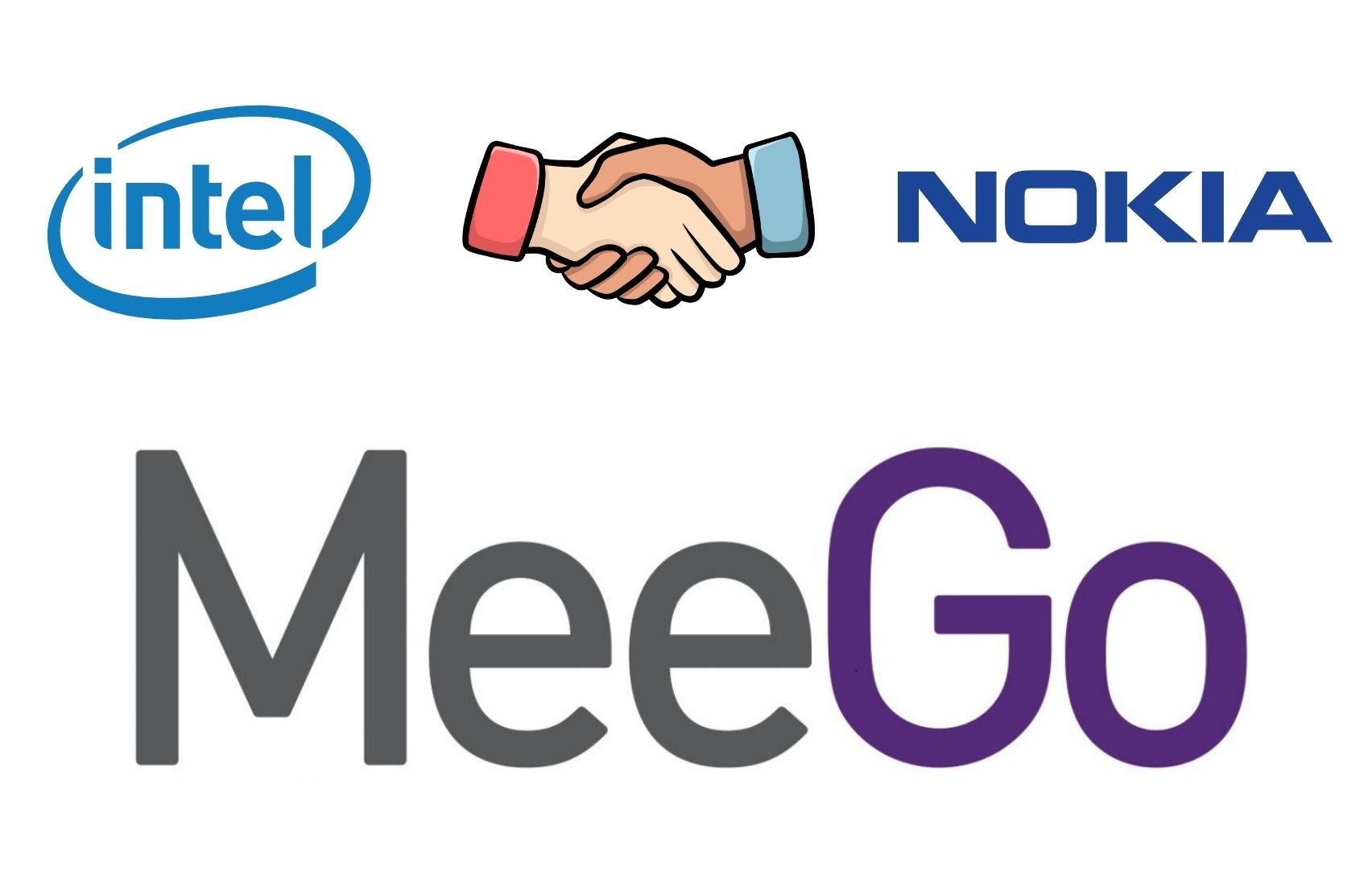
While the Maemo project, which was treated like a stepchild within Nokia, was about to be shelved, in 2010 Intel offered to combine its Linux-based Moblin operating system with Nokia’s Maemo. In this way, Intel will be able to compete against Arm and Qualcomm in the mobile field; Nokia would also have an opportunity to turn the leftover Maemo into a better operating system. The two giant companies finally announced this partnership at Mobile World Congress (MWC) and MeeGo operating system was born.
Operating System Chaos
Although the Linux-based MeeGo operating system, the new fruit of Intel and Nokia’s collaboration, is based on the combination of Intel’s Moblin and Nokia’s Maemo, it was a project that required hard work due to the architectural differences between the two. However, since Intel was busy developing its own wireless broadband technology called WiMAX during this partnership, it did not pay much attention to MeeGo and the development process began to take longer and longer. A few years later, MeeGo had reached a usable level.
At a time when BlackBerry manufacturer RIM was at its peak, the iPhone was gaining serious attention in the US and European markets, and Android smartphone shipments had already surpassed Nokia’s by the end of 2010, Nokia management was still confused about the operating system. Despite this disadvantageous situation, it was clear that the decline would continue, even though the company was still the second largest smartphone seller in the world. Because, although Nokia had always relied on its loyal customer base and a strong intellectual property portfolio, it knew that these would be insufficient against the breakthroughs of new players in the industry.
You can imagine that there was a lot of debate within Nokia about how to get out of this disaster. Of course, one of the suggestions was to switch to Android. However, at that time, mobile operators did not want iOS and Android to dominate the mobile space, and Nokia had already invested heavily in Symbian and MeeGo platforms. From another perspective, switching to Android would provide access to a much better application ecosystem with a wider developer base. At the same time, the partnership between Nokia and Google could have been a great trump card against Apple in the mobile field.

However, Nokia’s senior staff preferred Android and thought that it would be more difficult to differentiate their devices from other Android products. And for a company accustomed to managing the software that runs on its phones, ceding some of that control to Google was seen as a pointless move. Moving to Android would be a tough fight against Samsung, which is already the king of Android phones, and Nokia could not take this risk.
Others at Nokia also thought that the Windows Phone partnership with Microsoft would be a forward-looking decision. The two companies were already working together to bring Office programs to Symbian, and it was commented that it would be a logical move to further expand this partnership on an operating system basis. The first statement about this issue, which spread as a word-of-mouth rumor, was made by Stephen Elop, Microsoft’s business department president at the time, and said that Nokia and Microsoft would continue to be rivals in the mobile field. Already Windows Phone; It was not very successful compared to iOS and Android.
After everyone’s voice, Nokia suddenly made another change in its organization in order to simplify its corporate structure. The group, which was previously “Devices and Services”, is now called Mobile Phones; Other groups became known as Mobile Solutions and Markets. However, this re-planning, without a coherent strategy in hand, did not please Nokia shareholders and led to the dismissal of CEO Olli-Pekka Kallasvuo as CEO.
The Account Asked by the Past
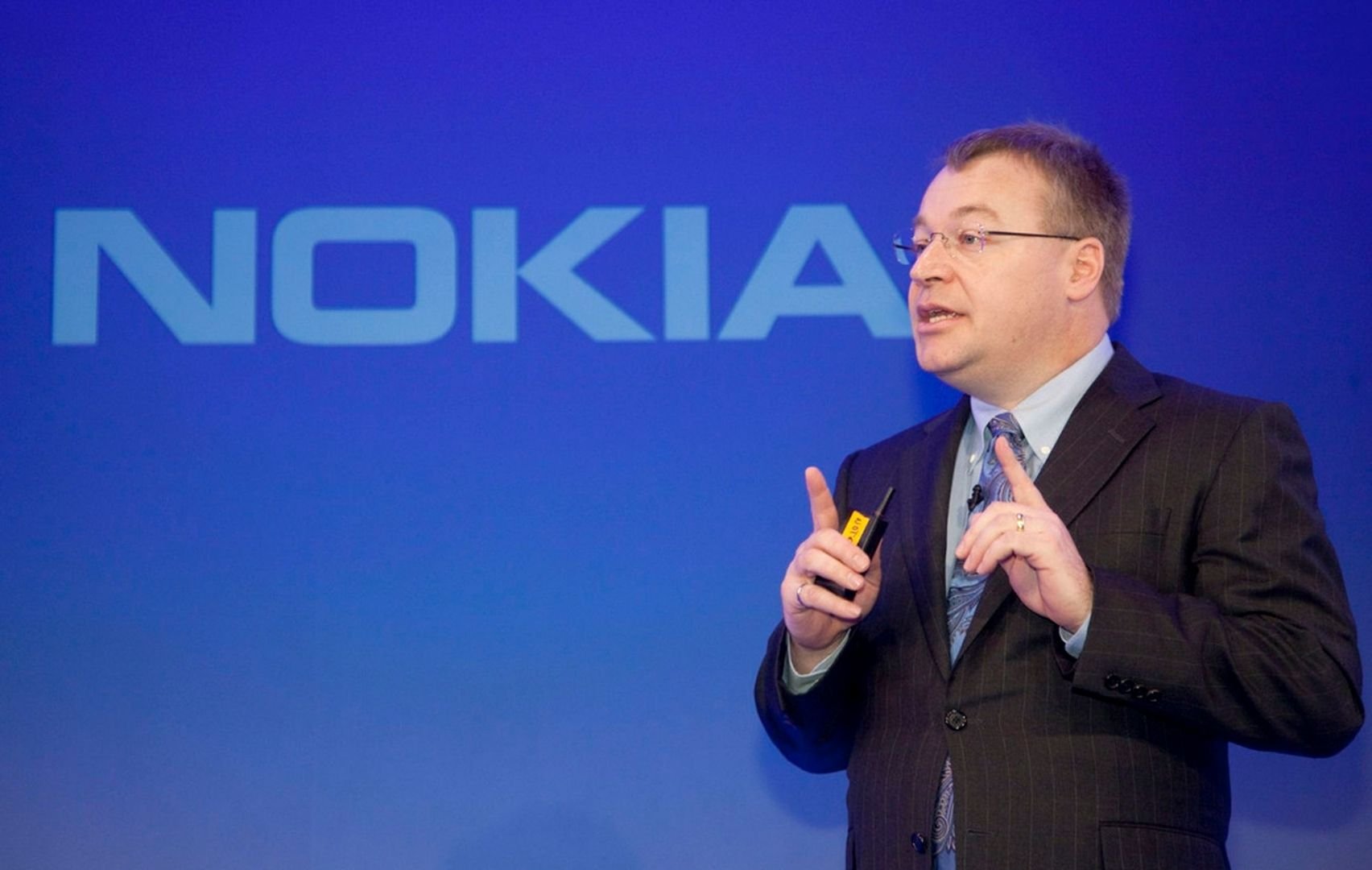
After a hasty change in the Nokia organization, Stephen Elop, whom we have just mentioned, was appointed as CEO in 2010. By this time, the company’s shares had fallen by more than 50 percent compared to 2007, when Apple’s first iPhone was introduced, and it became essential for Nokia to take action. At this time, although the company still had a strong image in the phone market with its 38 percent share in global sales, this would not last long, according to some analyses. Because market researchers predicted that Symbian would soon be overtaken by Android, and Windows Phone would gradually disappear over time.
In the Series of Disasters title, we said that Nokia prioritized the hardware factor among hardware and software. Nokia, which experienced the consequences of this choice made three years ago as major losses in market share, shares and general popularity, eventually fully accepted the importance of the operating system, that is, the platform, and turned its route here.
On the other hand, suspicions began to be discussed that Stephen Elop would make Nokia Microsoft’s biggest customer as soon as he became CEO. After discussing this possibility for a while, the board of directors decided that there was no other right person to manage the company’s transformation from a device manufacturer to a platform, and they decided to appoint Stephen Elop. After this development, which will change the entire dynamics of Nokia in the future, senior manager Anssi Vanjoki, who made great efforts for the company, also resigned. The CEO change this time would have very different consequences for Nokia than in the past.

After evaluating Nokia’s strengths and weaknesses, Stephen Elop’s first action was to focus on the development of MeeGo. However, Elop, who had doubts about whether the MeeGo project was the best way forward, also began to devise a plan to expand the partnership between Nokia and Microsoft. Rumors soon appeared in the press that Nokia might adopt Microsoft’s Windows Phone 7 operating system. During a shareholder meeting in January 2011, Stephen Elop subtly hinted at this possibility, but did not elaborate on it to avoid too much backlash.
Just two weeks after the meeting, the new CEO will inform all Nokia employees that he will go down in technology history with the title “burning platform” decided to send a long message. In this message, Elop openly admitted that MeeGo was not promising. But more importantly, he expressed his assessment of the company’s situation by giving the example of a man standing on a burning oil platform in the North Sea. This man had two options: “He could have stood on the platform and painfully succumbed to the flames or plunged into the freezing waters 30 meters deep.”
While confusion continues in Nokia, Apple gradually expands its dominance in the high-end smartphone market; Google, on the other hand, managed to retain the middle and entry segment. Stephen Elop thought that MeeGo’s development was very slow in this competitive environment and that Symbian did not have much of a chance against these new operating systems. There was only one solution for him…
Under the Wings of Windows Phone
On February 11, 2011, Nokia announced a broad partnership with Microsoft to create a new global mobile ecosystem. announced that it will establish a strategic partnership. In other words, Windows Phone would be adopted to replace Symbian for the company’s future smartphones, and it would work closely with Microsoft to further develop this new platform.
Following this important decision, which will be a milestone in Nokia’s history, the Symbian operating system was made specific to entry-level phones, and the software support for these phones was transferred to the management consultancy firm Accenture. At the same time, 2300 engineers working on Symbian were transferred to Accenture. MeeGo, on the other hand, has become completely open source and has become a customizable and free operating system alternative for all types of devices.
After Symbian and MeeGo were scrapped, some of the engineers and senior managers working on these projects left Nokia. Stephen Elop continued to increase his dominance within the company by quickly recruiting new personnel to vacant positions. In this way, Nokia strengthened its hand in making the board of directors accept its word.

Under the management of CEO Elop, every level of Nokia now began to focus only on Windows Phone. After the implementation of a coordinated work plan with the Windows Phone team at Microsoft, Nokia employees saw these breakthroughs as a new breath for the company and quickly adopted the partnership. However, as the truth of the matter became clear, this short-term happiness gave way to despair.
As we mentioned before, in the 2010s, operators were opposing a mobile industry focused on operating systems. In fact, for this reason, at that time, most smartphones were sold with various operator licenses, and with the phone model you purchased, you also determined the operator you would be a customer of. Although Google and Apple were able to somehow carry out this process, Microsoft was unsuccessful in negotiating with mobile operators: just like Nokia.
Additionally, many consumers were now accustomed to the wide range of apps available on Android and iOS. Because of this, Microsoft was having a hard time attracting enough developers to their platform to fill the “app gap” on Windows Phone. On the other hand, this situation also led to consumers not choosing Windows Phone due to the lack of application support. In summary, the Windows Phone environment has a low number of users because the number of applications is low; Since the number of users was low, it was stuck in a vicious circle of low number of developers.
The last product of the old Nokia: N9
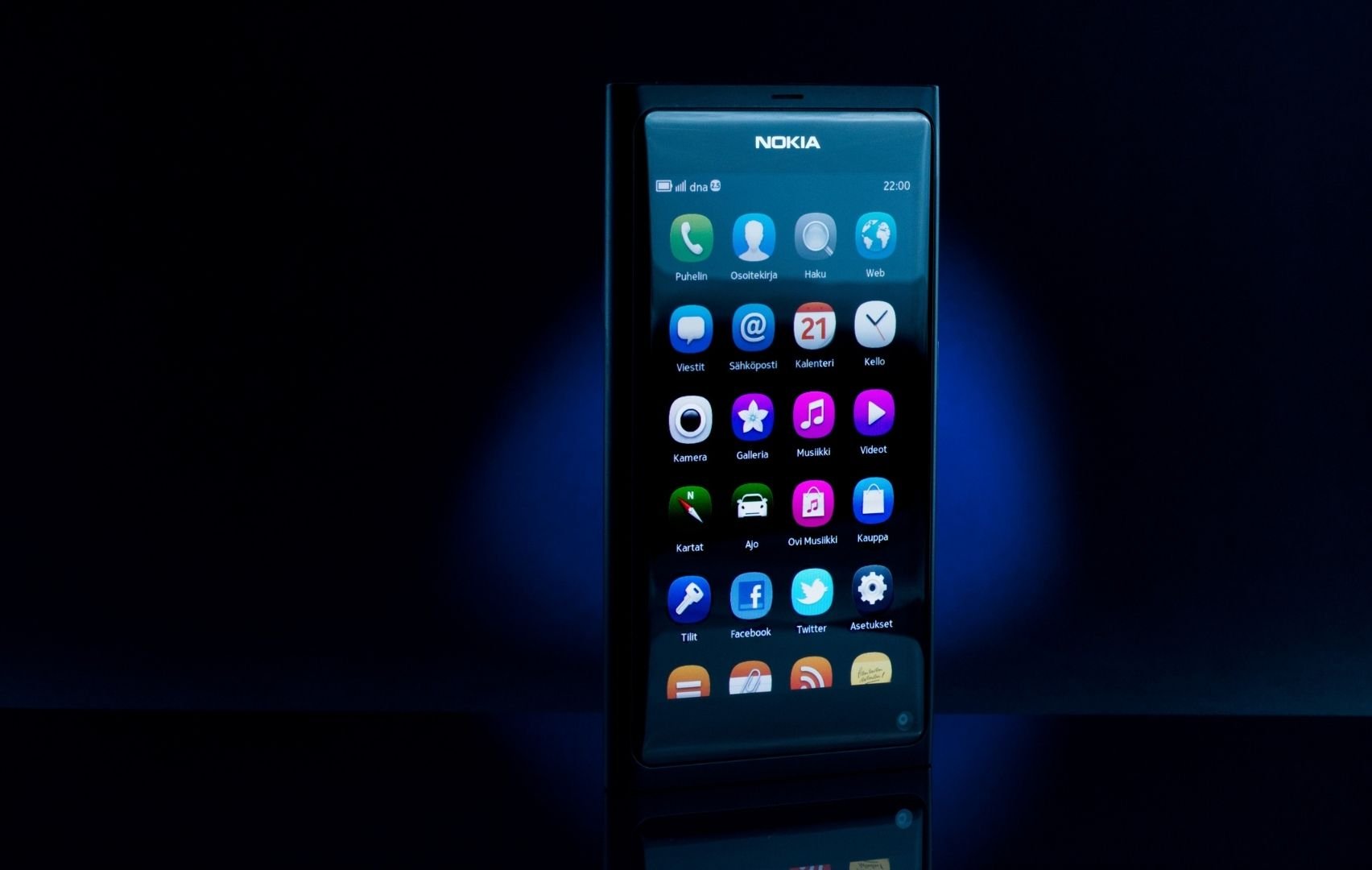
Nokia introduced the MeeGo operating system, which has only been mentioned in the flow of events, to users for the first and last time in 2011 with the N9 model. N9, which is a phone that is good enough to be in the top five among the best Nokia phones for many people even today, is a device that receives praise after praise for its unique design for its time, quality screen, solid structure, excellent battery life, great camera quality and user-friendly interface. happened. N9 was actually a product that could be described as the physical reflection of the effort put into the MeeGo operating system.
The phone had a polycarbonate alloy scratch-resistant casing available in three color options. Although it was a relatively thick device, it did not feel too bulky thanks to its curved shape. The design language was quite advanced compared to many phones released at that time, especially the fact that the screen was located in a single piece within the phone’s case, which increased its elegance.
N9’s 3.9-inch AMOLED screen had 251 ppi, which was an important element that increased the liveliness of the screen. Although its 8-megapixel camera is a little lower than the 12-megapixel sensor in its predecessor, the N8, it was possible to take videos and photos with quality worthy of a flagship phone with the N9.
Thanks to MeeGo’s optimized structure, the device offered a good experience even on 1 GB RAM and an old processor such as OMAP3630. However, while its battery could last two days, its interface came with many features that improved the user experience. The device also supports the latest NFC, Wi-Fi and Bluetooth standards, and users can even share a 3G connection via a cable or Wi-Fi.
Although the device received great acclaim from many technology editors after its introduction, Nokia sold the N9 in very limited quantities in a few regions in order not to overshadow the new Windows Phone models. The company hasn’t even launched the N9 in the world’s largest markets, including North America and much of Europe.
Lumia Era
Nokia’s biggest mistake was always relying too much on the loyalty of its customers, as was the case with the switch from Symbian to Windows Phone. No matter how good the hardware was, users were interested in what the operating system had to offer. By the time the company realized this, it was already too late: revenue in 2011 had fallen by nine percent compared to 2010, while operating profit had fallen by 75 percent to 884 million euros.
Introduced at a time when users were reluctant to switch to Windows Phone, Lumia 800 was very similar to Nokia N9 in terms of design. As you can guess, the main aspect of the device that was not adopted, which promised a very satisfactory experience in terms of hardware, was the Windows Phone operating system.
While some people love Windows Phone’s live tile-designed Metro interface; the majority hated this design. Although people who found Windows Phone lifeless compared to the structure of iOS and Android started to abandon Nokia, the biggest problem was undoubtedly that the application support was very limited. Although users were relieved at first when comments were made that this was a normal situation for a new ecosystem, the problem was never fully overcome.
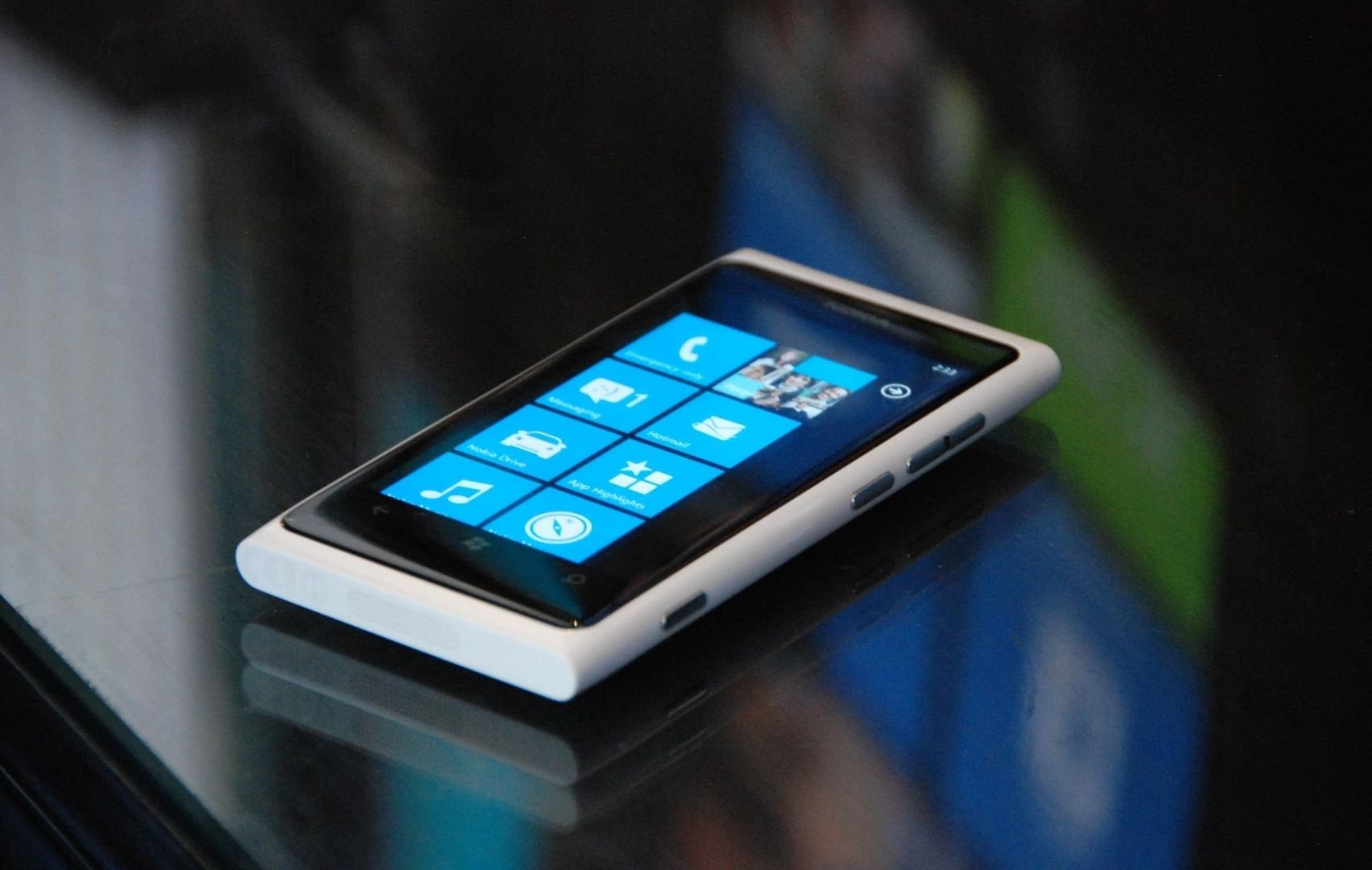
It is possible to say that the Lumia adventure, which started with Windows Phone 7.5, still created a positive atmosphere despite some problems. Some additions made by Nokia in terms of user experience to Windows Phone 7.5, which works very well with Lumia 800 (waking the device with a double tap, support for touch gestures), were appreciated by the users, and the approach to this new ecosystem became more moderate.
Microsoft in 2012; It moved to Windows Phone 8, which is based on the same NT kernel as Windows 8, designed for desktops, laptops and tablets. This update included many innovations compared to Windows Phone 7: The first was the much-requested feature of resizing the live tiles on the start screen. Skype and HTML5 integration were also made into the software, which had better hardware support such as multi-core Qualcomm chipsets, higher resolution displays, NFC and microSD card.
Although Microsoft’s improvements on the Windows Phone front were followed by Nokia’s improvements on the hardware side, there was the Windows Store problem, which was likened to a wasteland. The lack of users due to the limited number of applications and the developers’ lack of interest in Windows Phone became an inextricable situation.
Considering that one in every two phones sold worldwide in 2007 was Nokia Lumia sales were only in the 1 million range at the end of 2011 It was proof that things were not going well. At the beginning of 2012, Nokia’s financial situation worsened and soon the company’s sales manager Colin Giles resigned. Immediately after this development, Nokia management In February, 4000 jobs were lost in phone production facilities., In June, it laid off 10 thousand people and this process continued for months. It was estimated that more than 40 thousand people in total have been laid off since Stephen Elop took office as Nokia CEO.
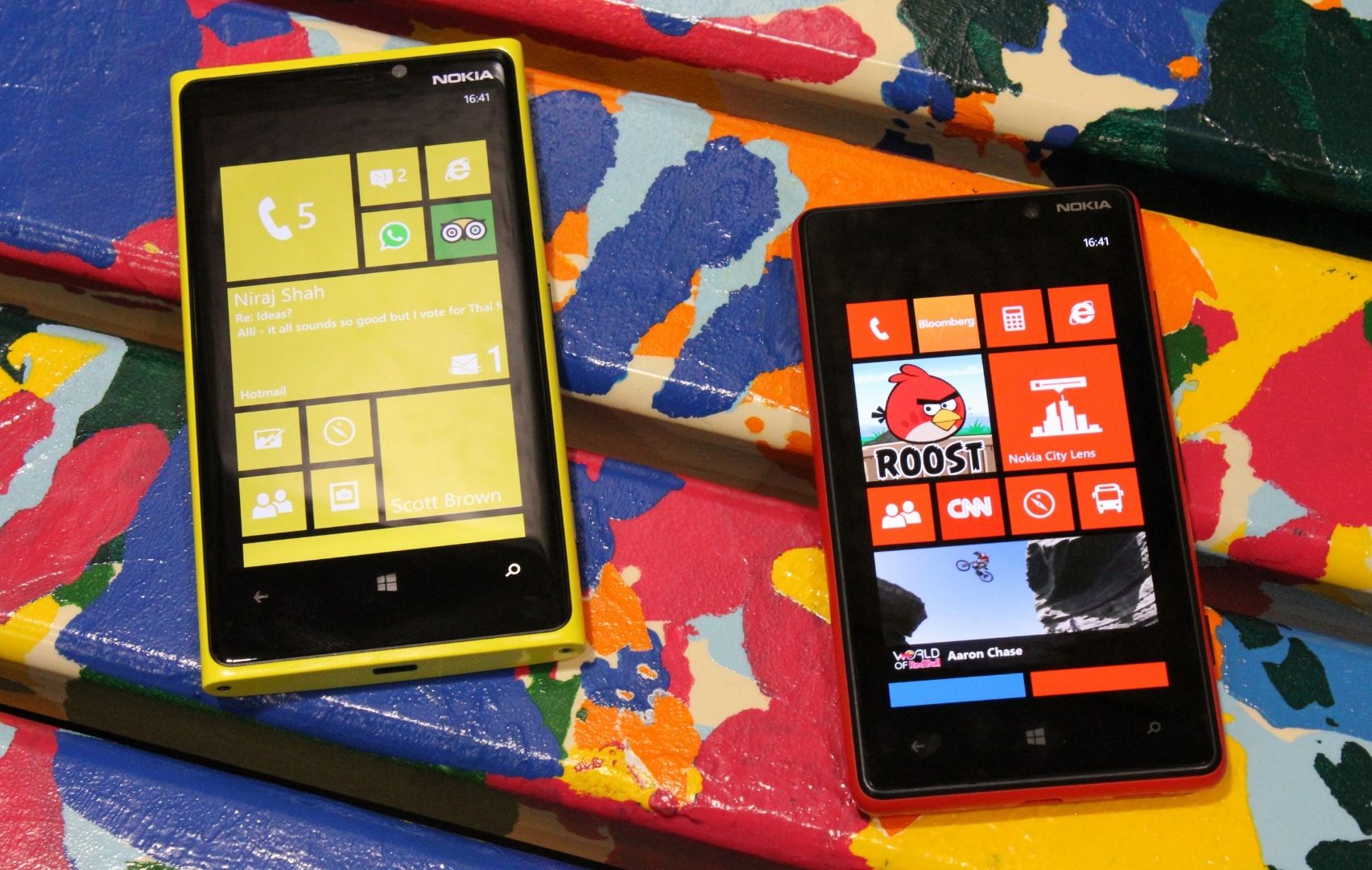
Despite this bad situation, new Lumias continued to arrive. In September 2012, Nokia introduced the Lumia 920 and Lumia 820 models with Windows Phone 8. In their review content, many editors found these phones great in terms of hardware and highly praised Nokia’s contribution to Windows Phone. However, of course, they also noted that these advantages are meaningless when it comes to insufficient application support.
Nokia, which closed each year with a greater operating loss, started to recover from the bad situation to some extent with the Lumia 928, 925 and 520 models released in 2013. With the differences in 928 and 925 designs; 520, on the other hand, was a product that did not make a loss, even though it performed below sales expectations, with its affordable price dropping to 50 dollars with the campaigns.
Also in 2013, Nokia announced that it had come to the end of the road for Symbian phones after sales volume dropped below half of Lumia phones. Only those who used the Nokia 808 PureView device, which expired a year after its release, reacted to this decision, which many people found reasonable. Featuring the largest camera sensor ever integrated into a push-button phone, the 808 PureView was among the most popular Nokia devices thanks to its quality video and photo capabilities. Later, this success even led to the birth of Lumia 1020.
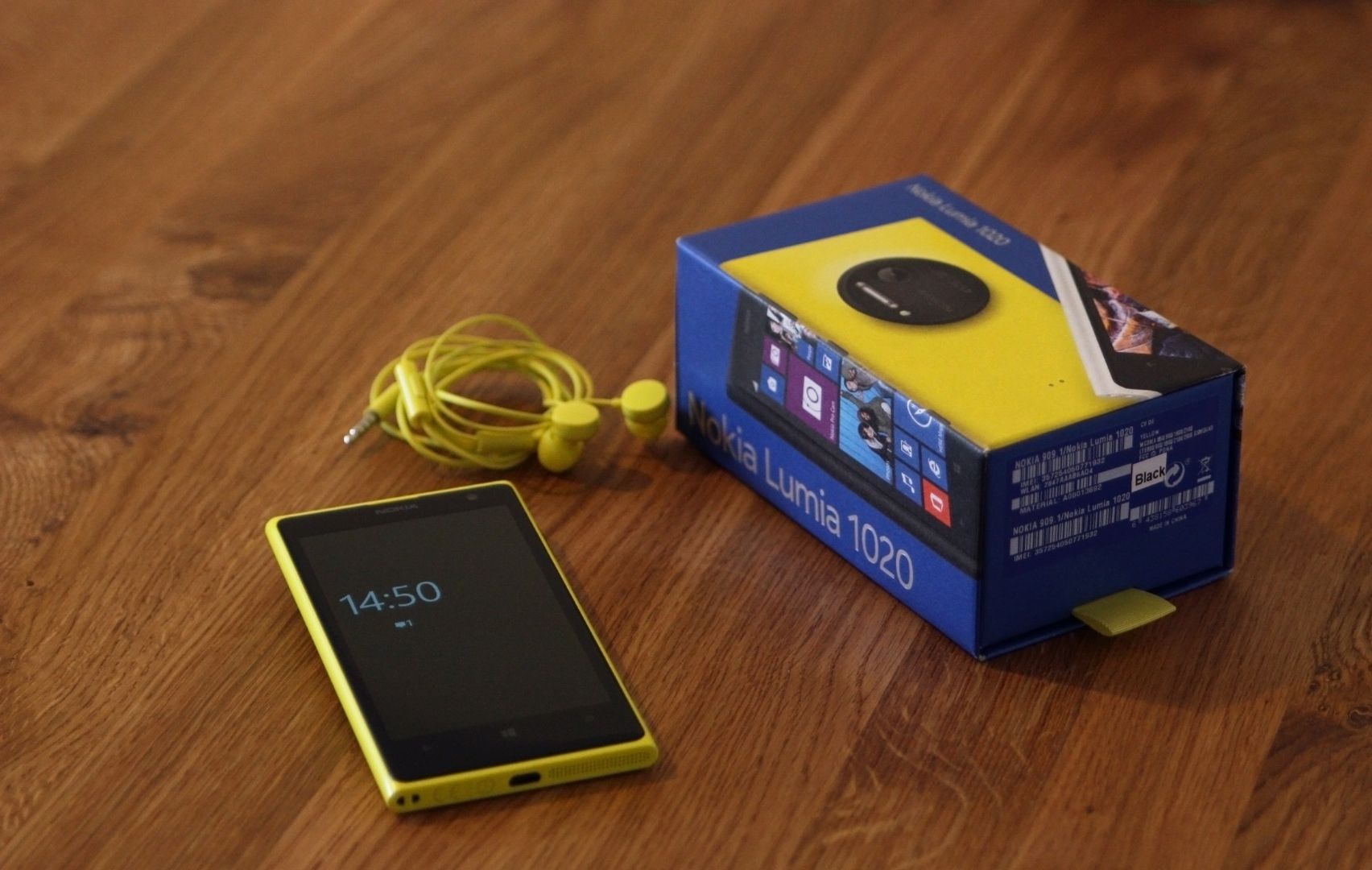
Lumia 1020, which houses a slightly more advanced Carl Zeiss sensor in the 808 PureView, went down in history as the best Lumia model carrying the DNA of both Microsoft and Nokia. It was a nice device as a package, with a design that felt nice in the hand, more than enough processor and memory capacity for its time, and a camera that was comparable even to today’s high-end phones. For example According to GSMArena, Lumia 1020 has a very good camera quality against Xiaomi Mi 11 Ultra.
Nokia continued to lose money despite slow and steady growth in Lumia sales. The company, which managed to surpass BlackBerry at least in terms of market share, now had to make a choice again after launching large-screen models such as Lumia 1520 and Lumia 1320. Realizing that it would not solve the fact that it had always been at a loss during the two years of Lumia operation, the board of directors decided to sell Nokia’s Mobile Phones group entirely to Microsoft. In this way, Nokia would focus on its main area of expertise, the telecom and network sector, as in the old days.
After long negotiations between the two giants, a compromise was finally reached; Microsoft bought Nokia’s Mobile Phones group for $7.2 billion. While Microsoft sees this acquisition as an opportunity to gain great knowledge to fill its hardware gap; Nokia believed that this sale was necessary in order not to risk its presence in other sectors.
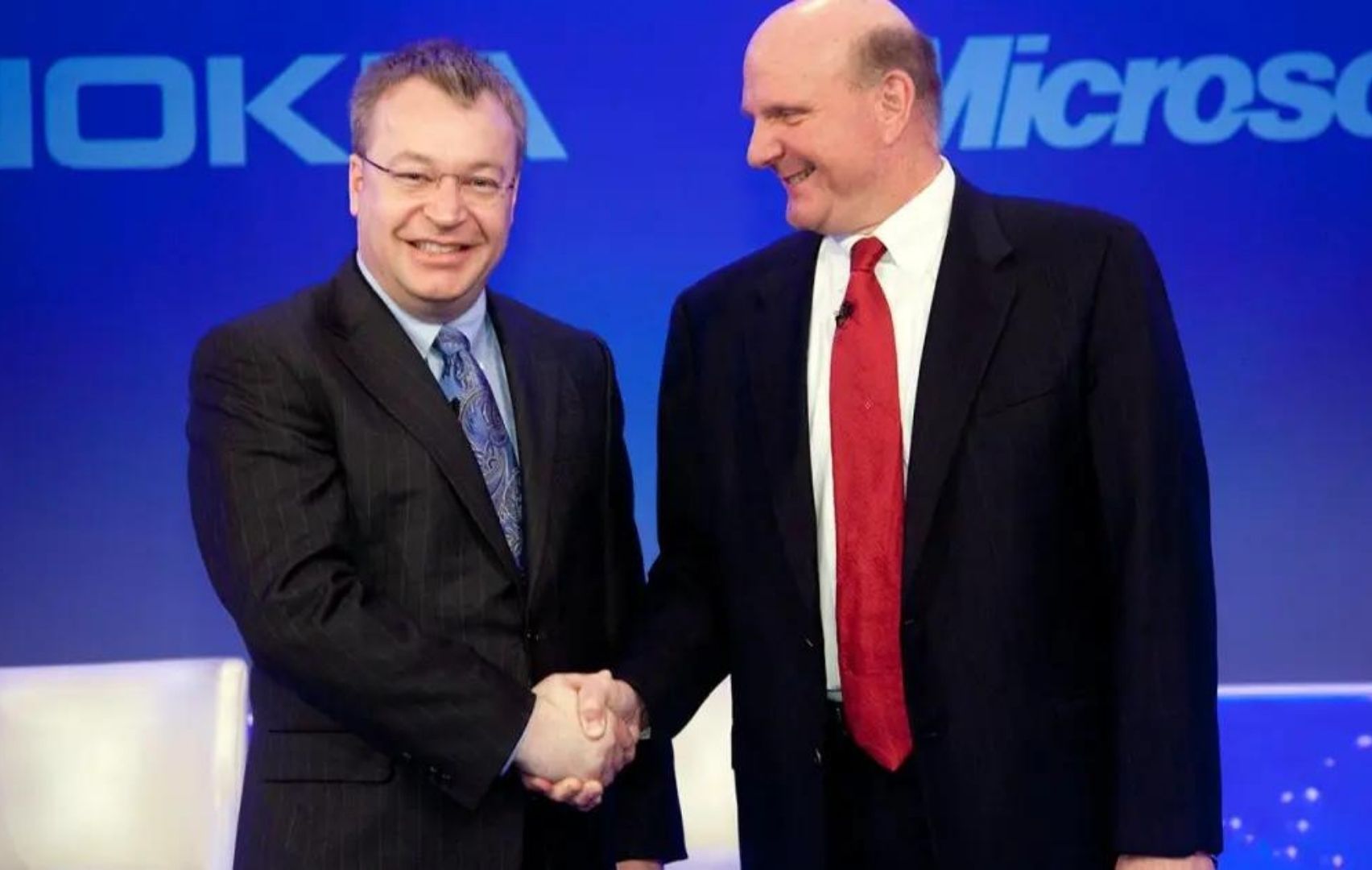
Free Nokia
As part of the acquisition deal, CEO Stephen Elop resigned in 2014 and became vice president of the Nokia mobile phones unit, which later became part of Microsoft. Rajeev Suri, who was then appointed as the new CEO by Nokia’s board of directors, first started to improve the company’s position in the telecom infrastructure market.
After leaving the smartphone market, Nokia’s financial balance tended to improve, and in 2014 they acquired Australian radio systems manufacturer Mesaplexx, US-based network distribution company SAC Wireless and part of Panasonic’s wireless network business. When things went even better at Nokia, this time it purchased Alcatel-Lucent Telekom for 16.6 billion dollars and strengthened its R&D capabilities at a time when the 5G revolution was knocking on the door.
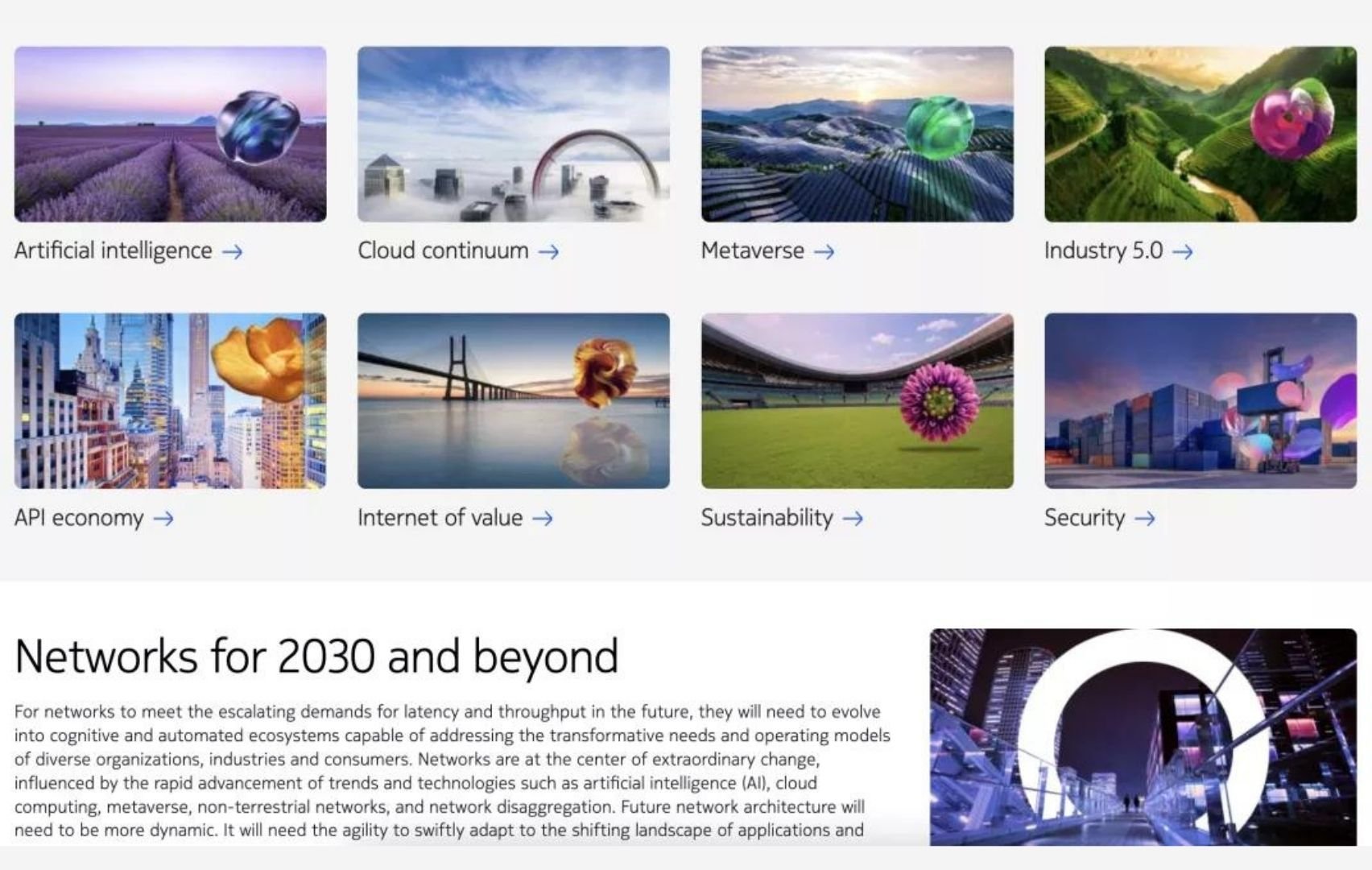
Nokia, which many people think is bankrupt, is today at the forefront of the race to offer 5G infrastructure to mobile operators around the world. In addition, Nokia also generates licensing income since it has patent rights for every innovation it has introduced to the mobile phone industry in the past. On the other hand, the Finnish giant has undergone a significant transformation in the last few years and is on its way to becoming a sustainable technology company that appeals to corporate customers rather than the mainstream consumer market. While the 5G business is progressing, we can say that the company is also interested in new areas such as metaverse, cloud and artificial intelligence applications.
So, who do you think currently operates Android phones sold under the Nokia brand?
Former Nokia Engineers Together: HMD Global
After continuing its work in the mobile phone unit it took over from Nokia for a few years, Microsoft realized that there was no room for a new player in the smartphone market dominated by iOS and Android. Thereupon, Microsoft sold the existing unit to a Foxconn subsidiary called FIH Mobile in 2016 and to a new company called HMD Global, founded by engineers who had previously worked at Nokia, for $ 350 million.
Following this development, Nokia allowed HMD to use its brand name, and we first encountered the new version of popular devices such as the 3310. We continue to see a wide variety of Android devices under the Nokia brand, but as it turns out, these phones do not have any direct connection with Nokia as we know it.
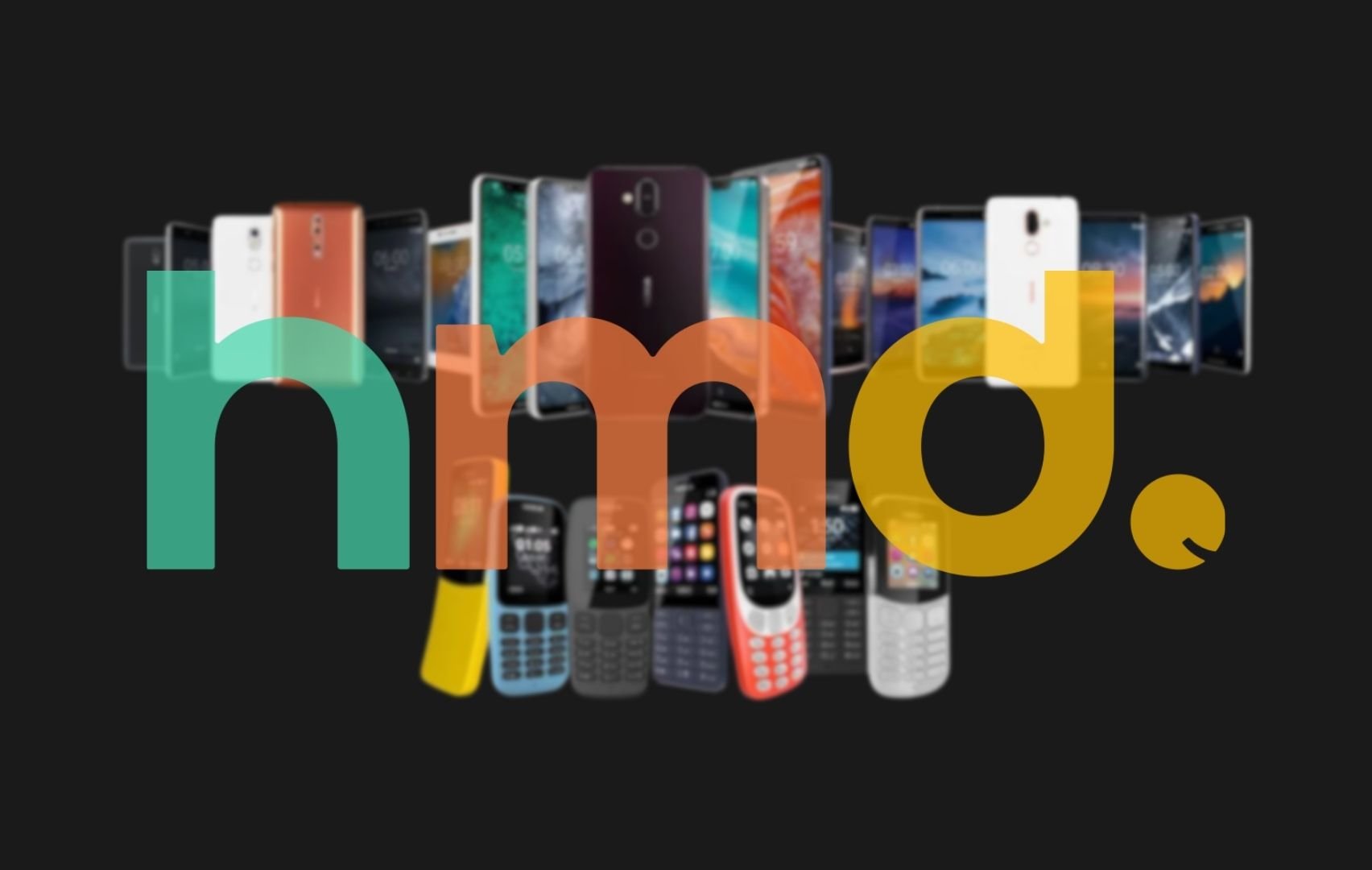
While HMD promises stock Android experience in its latest devices, it offers its products at competitive prices in many markets. Still, we cannot say that these devices stand out from similar alternatives from other manufacturers, but it is clear that Nokia’s image is effective in selling millions.
To explain our news titled “Nokia Brand Has Come to the End of the Road”, which we published a few days ago, in the context of this article, Nokia phones will be replaced directly by the HMD brand, as the name usage right, that is, the license period, given by Nokia to HMD will expire this year.
We have come to the end of the two-part article series in which we discuss the entire adventure of Nokia. Please don’t forget to share your thoughts with us in the comments. Stay safe.

